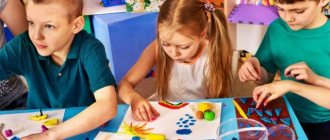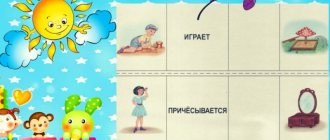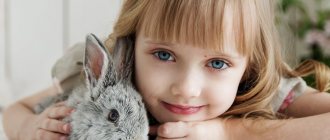Imagination is the process of creating new images of the future, based on previous experiences and creative thinking. It plays an important role in creating images that were not accepted by a person in reality, influences the strength of emotions and feelings, and is an important factor in the development of human personality.
“ “Imagination is a necessary and integral moment of thinking, since thinking always includes the processes of forecasting and anticipation.” L.S. Vygotsky
It tends to develop under the influence of broadening one’s horizons, accumulating experience, images and information. Attention has been paid to the development of imagination since childhood; many children's games and exercises in preschool and secondary educational institutions are aimed at it.
Another property of imagination is that it is not constant, periods of decline alternate with rises, so-called inspiration, but it has been scientifically proven that inspiration and fresh ideas often come to us precisely in the process of work, after a certain amount of effort.
Classifications
By degree of activity:
- Active (stimulates the implementation of created images, activates creative activity, sometimes requires great effort if the creation of images is necessary for work, for example, like writers, screenwriters, decorators).
- Passive (does not encourage a person to take active action, but only generates images in his mind with which he is satisfied without realizing them, or they are, in principle, not realizable).
By type:
- Productive (creates new elements, so-called fantasy products, something that did not previously exist).
- Reproductive (imagination based on existing phenomena and objects).
- Dreams (the process of imagination aimed at the real future).
- Hallucinations (images created by altered consciousness).
- Dreams.
In connection with past experience:
- Recreating (imagination that is based on experience).
- Creative (creating new images with minimal reliance on experience)
Features of imagination development: how does the process occur?
The ability to intentionally create non-standard images in the mind and consciously manage them is not an innate ability of people. It is formed over the years in the process of development.
At each stage of such development, starting from infancy and as they grow older, there are their own characteristics. They depend, among other things, on the physiology of each individual person.
Therefore, we will not go into all these subtleties, but will consider general patterns that influence the work of the imagination.
- The accumulation of ideas through observation , curiosity and perception by the senses. The more such ideas in our minds, the richer and wider the choice for their application in the future.
- The ability to clearly imagine images in all details mentally. This will allow you to focus on the ability to highlight the features of each specific item that represents its value.
- Ability to go beyond limitations. Limitations can be fears, standards of thinking and patterns. So feel free to use your imagination. It helps to better imagine the final result of actions, as well as predict the behavior of others.
You can consciously fill yourself with this by doing simple exercises. We have collected 21 such methods, which we will consider below. We recommend that you read and try to put into practice the proposed means for improving your imagination.
Just don't be alarmed if things don't work out. Each person has a different level of imagination development. If you do these exercises systematically, you will definitely get a shift in your imagination.
Techniques of creative imagination
- Agglutination (creating a new image from two or more existing ones, for example, the fabulous “Hut on Chicken Legs” appeared as a combination of “hut” and “chicken”).
- Analogy (the image is built on the basis of an existing one, but with exaggerated or understated characteristics, for example, epic heroes who had fabulous strength and could fight the enemy one on one).
- Typification (a single image of a typical, existing image, for example, a painting by landscape artists).
- Association (creation of a holistic image based on small units of already existing images).
- Personification (creating an animate image based on inanimate elements. Most often used in myths and fairy tales).
Creative imagination can be scientific, artistic, technological - in a word, it can be used in almost all spheres of human life. It is important to distinguish between creative imagination and dreams, since it belongs to the active type and is further aimed at realizing the created images, while dreams are a passive type, they may not motivate a person to action.
Everyone knows that human mental processes are divided into:
- Cognitive; sensation, imagination, perception, memory, thinking, speech.
- Emotional.
- Strong-willed.
Our article is devoted to such a mental process as imagination, which is closely related to all other cognitive processes.
Imagination is the mental process of creating new images, ideas and thoughts based on existing experience, by restructuring a person’s ideas. It can be active or passive.
Active imagination is a condition for human activity. It is divided into recreative and creative.
The reconstructive imagination is formed on the basis of nature, a city landscape, a verbal portrait, a diagram, a drawing, etc. In this sense, a person seems to fill the source material with the images he has.
Creative imagination is the process of creating new images that do not exist in reality, which contributes to the development of initiative and human independence.
Imagination can also be passive, leading a person away from reality and away from solving practical problems. A person seems to go into a world of fantasy and live in this world, doing nothing and thereby moving away from real life.
The value of a personality is determined by what types of imagination predominate in it: the more active and significant, the more mature the personality.
Imagination can be involuntary and voluntary.
Involuntary imagination is a process in which new images arise in a person’s mind without a predetermined goal, of course.
Voluntary imagination is carried out deliberately, in connection with a predetermined goal. A person, imagining, searches, selects, combines and mentally transforms his ideas, shows conscious efforts.
Thus, imagination is one of the cognitive processes that characterizes a certain level of development of a person’s consciousness and his creative potential.
Creativity is an activity that generates something qualitatively new and is distinguished by originality, originality and uniqueness.
L.S. Vygotsky formulated three laws of RTV (development of creative imagination). 1. The creative activity of the imagination is directly dependent on the richness and diversity of a person’s previous personal experience. Therefore, we need to help the child accumulate knowledge, experience, and images if we want him to be a creative person. 2. You can imagine something that you haven’t seen yourself, but have heard or read about, that is, you can fantasize based on someone else’s experience. 3. The content of imaginary objects or phenomena depends on our feelings at the moment of fantasy. Conversely, the subject of fantasy affects our feelings. You can “fantasize” your future in such a way that it will be a guide for your whole life, or you can imagine horrors and be afraid to enter a dark room. Feelings, like thoughts, drive creativity. RTV allows everything - to be an omnipotent wizard, to ignore any law of nature, to create a new law, to straighten the rainbow, except for the immoral.
The creative abilities of preschool children are an original approach to understanding the environment, a tendency to find non-standard ways and means of solving problems, and a desire to obtain original results. The child shows creativity in games, drawing, and creating crafts. If creativity is not observed in children's activities, then it is important to pay attention to the development of creative abilities. In any case, this issue is worth paying attention to. As a person grows up, he or she faces many extraordinary tasks, the solution of which requires a creative approach. It is believed that the creative abilities of preschoolers begin to develop later - in the second half of preschool childhood. Although Alice Paul Torrance (American psychologist), having conducted her research, believes that the peak occurs between the ages of 3.5 and 4.5 and in the first three years of school, it decreases in subsequent years and then again receives an impetus for development.
The development of imagination is not the result of direct instruction. It is due to the growing transformative activity of the child and the mechanisms of self-development of imagination: the opposite direction of varying and modeling elements of experience, schematization and detailing of images.
The preschool period is especially favorable for the development of artistic and creative abilities. The child gets acquainted with visual and constructive activities, pays attention to the musicality of the surrounding world, and tries his hand at creating drawings, crafts and buildings. A clearly expressed cognitive need of a preschooler is a sign of creative potential. It is useful for parents to know how children's inclinations in certain creative areas manifest themselves.
Who, if not the parents, is obliged to notice what the child is more drawn to, what his capabilities are in a particular period, and on the development of what abilities it is important to focus the main attention.
Of course, a preschooler’s personality should be enriched in different directions - teaching drawing and modeling, designing and inventing stories together, organizing a simple home theater. In each of these types of activities there is room for the transformation of reality and the manifestation of creative abilities.
Most children do not have a special interest in all types of activities, but highlight priority ones for themselves. It is in this field that parents should create conditions so that the child discovers new means and expands the options for using them to realize his plans. Directed efforts of loving and understanding adults, unobtrusive participation in children's games and activities can and should be used to develop the creative abilities of preschoolers.
Signs of creative abilities of preschool children in artistic activities.
Just how and what means a child chooses to realize his plan indicates the presence or absence of a creative approach:
- A preschooler prefers drawing or modeling as soon as he has a choice of what to do.
- As part of the plot, it depicts a large number of objects and people.
- He chooses original subjects for his drawings.
- Resorts to drawing or sculpting to express his mood and feelings.
- He uses new material with interest to implement his plans, and is also eager to try out a new medium in practice (sculpt from clay, not plasticine; draw with paints instead of pencils).
- Shows interest in works of painting and sculpture - examines, speaks out about the painting or statue he sees.
Creative talent in theatrical activities.
Attentive adults notice artistic talent in a child from early preschool age, as soon as the child develops speech skills. Later, nonverbal expression comes into play, complementing the expressive signs of artistry.
- Likes to imitate colorful characters from fairy tales and cartoons, trying to convey the tone of speech and characteristic movements.
- He easily takes on any role, imagining himself either as a friendly dog, or as a dangerous wolf, or as a Wizard.
- Actively uses facial expressions, gestures and movements to convey the feelings and character of the image.
- Seeks to evoke an emotional response in others when telling something or portraying a character.
- Uses attributes (appropriate clothing, distinctive supporting details) to emphasize his suitability for the role.
- He enthusiastically watches children's performances, be it a theatrical game or a puppet show.
Signs of abilities for speech creativity in preschool age.
What features should adults look for in order to notice the makings of literary talent in a preschooler:
- The child listens carefully to fairy tales and children's stories. At some plot points he stops the narrator and asks clarifying questions.
- Can compose a story himself, observing the key structure: a semblance of a plot plot, a climactic event and a final moment. For younger preschoolers, such stories can literally consist of 4-5 sentences, but the structure of the story can be traced.
- Comes up with something original when he retells a well-known story or fairy tale.
- When talking about something, he adheres to the storyline and main idea.
- Uses words that convey the experiences and feelings of the characters.
- He explains some points in particular detail so that listeners understand what is happening.
Developing creativity through story writing
Without creativity, it is impossible to compose your own story. After all, the child needs to extract from memory suitable characteristics for invented characters, place them in imaginary circumstances and fantasize the actions of his heroes.
To create images you need material. The more of it there is in a child’s memory, the more variably the child will use it.
Parents stimulate the development of creative abilities in preschoolers if they not only read and tell them fairy tales and other children's works, but also encourage them to write:
How would everything have happened if the main character had acted differently?
What magical object would be useful to the hero of a fairy tale, and how would it help him?
How differently could the story have ended?
Questions like these encourage children to first modify and add to existing works, and then create their own stories.
Construction as a means of developing creativity.
If we keep in mind construction design, then children rarely build the same objects. They conceive new buildings, find new ways to implement their ideas.
In addition, during the process, the young builder can change his plans several times. As a result, its design acquires new details, improves, and changes its purpose.
It is imperative to ask the preschooler what he built, what the structure is intended for, how to use it, how it differs from the previous one, etc.
Paper design is an unlimited field for creativity. For a child, this type of creative activity becomes available in older preschool age with the development of manual skill. A complex type that is implemented at the suggestion of an adult and with his leading role.
At first, the child only observes what an ordinary sheet of paper can turn into in skillful hands, then he tries to repeat it with the direct participation of an adult.
Tips for parents on developing creative imagination.
Start with "What's It Like?" games. Try to guess the images in the clouds, frosty patterns, colorful blots, unusual roots, twigs, leaves.
Ask your child more often: how is that?
- Just as fluffy - like what?
- Just as prickly - like what?
-As cheerful as anyone?
The child will learn to compare and find a suitable image.
Accept your child's fantasies. Don't reject them. About chocolate trees and snow frogs, about sweet rain and a blue apple... By imagining, he will learn to write fairy tales, sketches, stories.
Try to draw on large sheets: with paints, chalk, prints of leaves and candy wrappers, with your palms and fingers. Try to ask: what happened? What does it look like? Even if the result seems absurd to you, ask your child: “What is this?” And he will definitely answer. Embrace his “creativity.”
Give him plasticine and clay.
Give empty boxes and plastic cups. Model, invent, build... let all your child’s imaginations spill out.
Create your own “typography” at home. Try publishing family newspapers and books. Teach and learn together with your child to design, compose, and draw.
Try to create a home “gift fund”, where you will put all the interesting crafts that you can give to your family, friends, and acquaintances on occasion.
Try to create carnival costumes together.
Try to involve your child in decorating the holiday table.
Teach your child to be witty. Teach him to find funny things in the world around him. A sense of humor promotes a creative attitude towards life.
Read funny and witty poems by D. Kharms and O. Grigoriev, G. Oster and A. Usachev.
Remember! Creative, gifted, capable children often stand out for their unusual behavior and original actions.
If you want your child to grow up internally free, independent, and strive for success in the future, develop creative imagination from an early age.
Methods for developing creative imagination
There are many specific exercises for developing creative imagination, but it is worth noting that the main factor is the accumulation and expansion of experience - scientific, creative, technical. The more information and images there are in a person’s mind, the more actively his imagination will work, relying on them, synthesizing and giving birth to new ones.
Gaining experience can be done in the simplest ways - reading books of different genres (fiction, detective stories, poetry are especially useful), visiting museums, theaters, watching films, traveling, communicating with different people, learning new skills.
In addition to broadening your horizons, it is important to develop your powers of observation - pay attention to small details of the world around you, try to remember them, for example, small details on the facade of a historical building, store signs, advertisements, and the appearance of passers-by. It seems to us that we do not remember these details, but they remain in our subconscious and, if necessary, emerge during the creative process, helping it.
Ability to find solutions to problems
Before moving on to tools for developing productive imagination, it is important to note that everyone has the ability to imagine creatively. The human mind has an important property, which is the presence of an incentive to eliminate logical contradictions.
For example, many smokers, knowing about the serious harm of smoking, always know how to explain to themselves and the people around them the reason why they do not give up this harmful habit. It turns out that smokers are faced with an internal contradiction “smoking is good - smoking is bad”, which in psychology is called cognitive dissonance (see Wikipedia). This contradiction causes psychological discomfort, and people are forced to come up with all possible ways to eliminate this contradiction, and some of them reflect the high creative abilities of a person: smoking can be harmful, but pleasant, smoking helps creativity, puts you in the right mood, helps train breathing, reduces weight etc. Almost every smoker has his own excuse, which was caused by a logical contradiction.
It turns out that a person is initially programmed to struggle with contradictions and look for a way out of the current difficult situation. In the previous lesson, we had many modified judgments regarding the object in the chosen focus. At the stage of breaking the pattern, we violated logic and came to dissonance, which will have to be corrected with the help of our imagination, life experience and natural predisposition to a certain type of thinking. Moreover, the ability of people to effectively search for solutions to logical contradictions is stronger, the more experience a person has, ideas about various models of behavior and other knowledge about the world around him.
To understand how this mechanism works for you personally, and also to train your imagination, we suggest you complete an exercise called “Jumbled Letters in Words”
Exercise “Jumbled letters in words”
This exercise does a great job of showing that our brains can find and understand the meaning of words, even if they are deliberately trying to confuse it. This happens because we do not read letters and syllables, but words as a whole, and in addition, we understand the meaning of words thanks to neighboring words and phrases that our brain has encountered before.
Statistics Full screen
Exercises to develop imagination
- Come up with a title and description for the picture. For this exercise, it is advisable to go to a museum of modern fine art or find a gallery of surrealist artists on the Internet. The main condition is that the picture should not be realistic and obvious in content. Study it with your eyes and write it down, or recite the options for names and plot. Paintings by Salvador Dali or Pablo Picasso are good for this workout.
- Solving visual riddles or doodles. These are laconic images that can be interpreted in different ways, there is no correct answer to the content, all the images that your image creates will be correct and the more of them, the better.
- Coming up with a biography for passers-by on the street or passengers in transport. When describing a person’s life, try to think through as many details as possible: who his family is, what institute he graduated from, where he works, and so on.
- Burime or collective poetry writing. This is not only a fun, popular game, but also an effective exercise for developing creativity. Principle of the game: the first participant writes several rhyming lines on a piece of paper, wraps the sheet so that only the last line is visible and passes it on to the next participant, who also comes up with a verse based on this line, wraps the sheet and passes it on. At the end, the sheet is unfolded and the “poem” composed by common effort is read out by one of the players.
To make the result interesting, it is better to avoid banal rhymes and not use cognate words and pronouns. The more unexpected the rhyme, the better. You can play in burim by discussing the rules in advance (for example, the size of the verse and the content), or you can simply come up with funny rhymes without a specific focus.
- Crocodile. This well-known game for noisy groups is an ideal trainer for creative imagination. The rules of the exercise are simple and familiar to everyone - one participant tells the other in the ear a word (this can be a noun, a stable combination, a verb or an adjective, you can establish rules at the beginning that, for example, only nouns or only verbs are used) and he must only Using gestures, explain this word to other participants.
- Activity. It is also not only an exercise, but also a popular game and has many varieties. The classic version is a set of cards of varying difficulty in which players need to draw, show or verbally describe the word written on them.
Even more exercises to develop creative imagination and fantasy can be found on the website:.
Why develop your imagination?
Using various methods of developing one’s own imagination, a person acquires a unique ability to expand consciousness, create mental images, form new ideas, imagining objects that are not perceived in reality as comparable. Thanks to this quality, we develop imaginative thinking, and it already allows us to solve various problems without even using practical actions.
Using games and tasks recommended by psychology to develop imagination and tasks, a person learns to transform familiar objects, using them for his own needs in an unusual way. This allows you to plan new goals, model behavior, create through visual activities, play, and better remember information.
Games aimed at developing imagination begin in childhood, and then they are only improved by adults with constant training. If you don’t know good ways to develop your imagination, pay attention to reading books.




